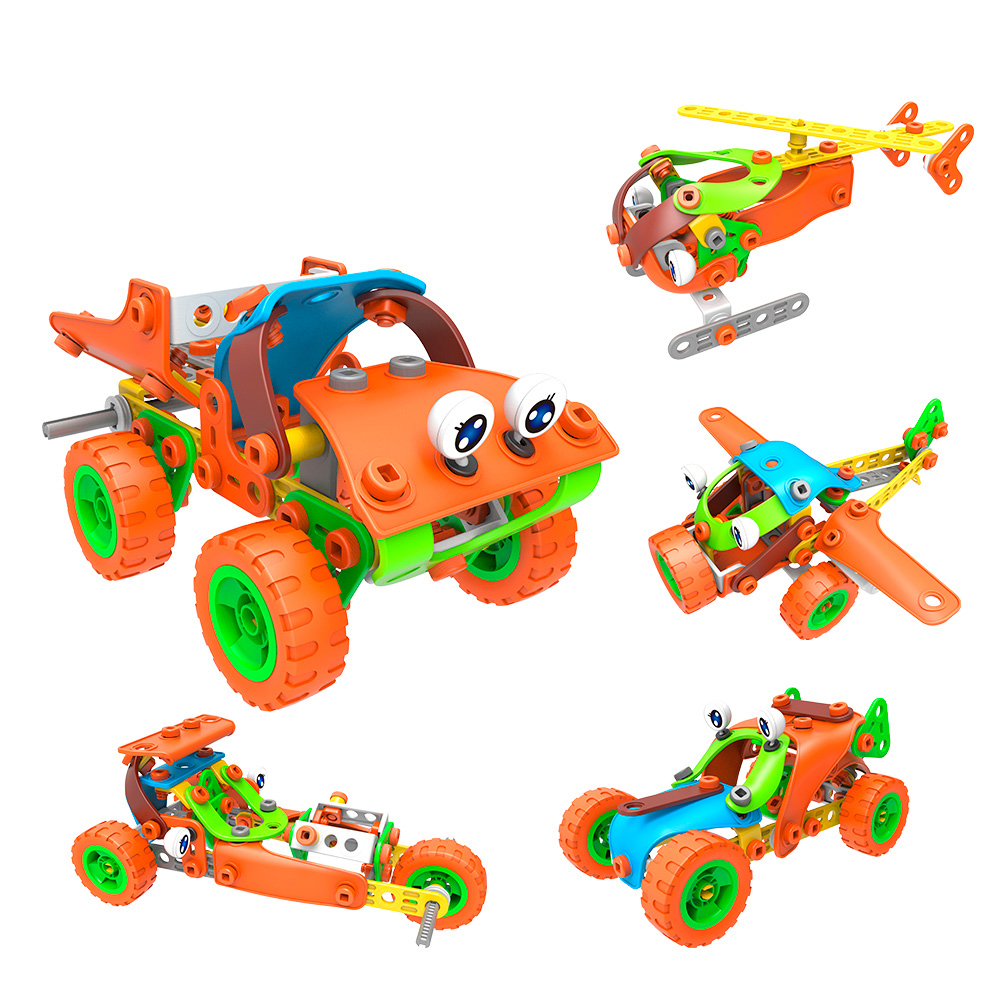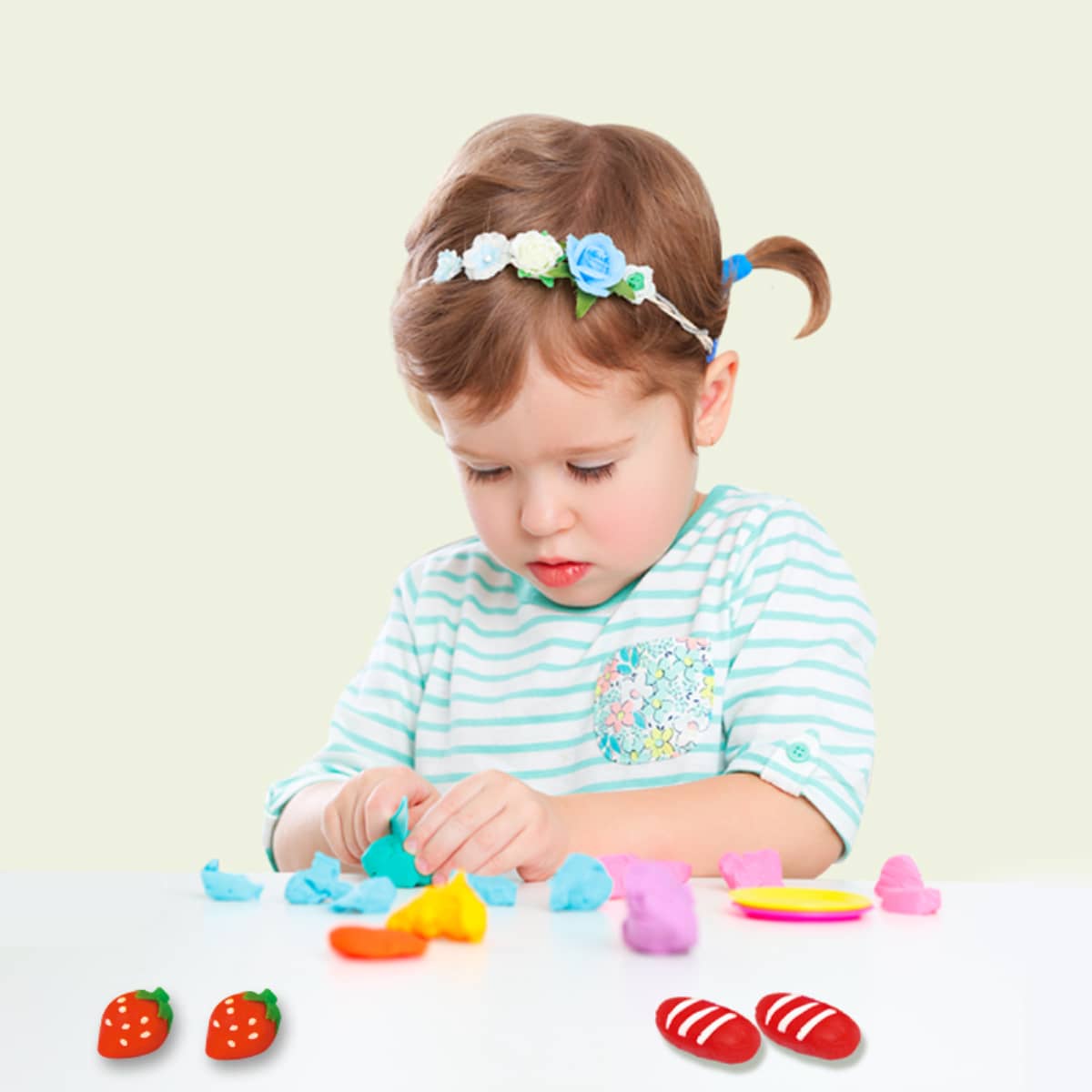To revisit this article, visit My Profile, then View saved stories.
To revisit this article, select My Account, then View saved stories Kitchen Toys

If you buy something using links in our stories, we may earn a commission. This helps support our journalism. Learn more. Please also consider subscribing to WIRED
Anyone who has ever watched a toddler methodically take apart a Tupperware drawer should know that many children are natural-born engineers. Your only job as a parent is to nurture their creativity … and clean up the mess afterward. Between us—product reviewer Scott Gilbertson, editor Adrienne So, and I—we have seven kids. This, honestly, is the most fun part of my job—calling in STEM toys for my kids and I to test together and recommend to you. It hardly feels like work at all.
Wrap up a few of these STEM toys (also called STEAM toys; we love you too, Arts!) and books for your future scientist to blow up, burn up, or dismantle. Hopefully, they'll thank you for the early encouragement when they're older. Be sure to check out our many other buying guides, including Our Favorite Subscription Boxes for Kids and How to Build the Lego Collection of Your Dreams.
Updated November 2023: We added Clixo Kits and Kanoodle Pyramid, and updated prices throughout.
Special offer for Gear readers: Get WIRED for just $5 ($25 off). This includes unlimited access to WIRED.com, full Gear coverage, and subscriber-only newsletters. Subscriptions help fund the work we do every day.
Construction kits are compelling no matter your age, and my entire family found Clixo’s colorful, versatile, snap-together magnetic pieces irresistible. You can build three-dimensional shapes from these flexible pieces by connecting the magnetic ends and bending them the way you want (my youngest made a cat, my teen made a crown). These durable and washable pieces stack neatly to pack away. We love that you don’t need a flat surface to build because it means you can play with these kits anywhere. If you prefer a themed pack, we also liked the Mars Rover Pack ($45) and the Ocean Creatures Pack ($45), and both sets feature glow-in-the-dark pieces. The kits are recommended for kids aged 4 and up. —Simon Hill
Turing Tumble is a wonderful way to teach kids coding fundamentals. It combines the simple pleasure of marble runs with a beautifully illustrated sci-fi comic book packed with challenging puzzles. The board resembles a pachinko game, and you have to slot in different pieces to divert the blue and red balls and get the required pattern at the bottom. My 9-year-old spent hours working through the puzzles, reconfiguring this marble-powered computer. As the challenges grew tougher, the whole family joined in to find solutions. Well-designed, satisfying, and rewarding, this is a good pick for kids 8 and up. —Simon Hill
Teaching basic coding concepts to young kids is a challenge. To do it without a screen is even tougher. But QUBS has come up with an elegant solution. These beech wood blocks look like buildings, but each has a symbol relating to a command (turn left, turn right, U-turn, repeat the last command, stop, record path, play path). When kids put the magnetic top on the red car, it begins to drive. Using radio-frequency identification (RFID) technology, the car reads the commands on the blocks. There’s a lovely guidebook that includes stories and activities, but the best thing about this Montessori-inspired wooden toy is that kids can dive in and learn how it works through play. —Simon Hill
Lego Education's Spike Prime building set is a complete DIY robot-building classroom in a box. Literally. Prior to the abrupt rise in distance learning several years ago, Lego marketed this primarily to schools. It comes with its own lesson plans, but don't let the seriousness fool you—my kids love this set and went from never having used it to programming their own robots (using the drag-and-drop Scratch programming language) in a couple of afternoons.
Lego keeps updating Spike Prime too. Recently it released a new series of plans for bots that track exercise and help kids learn about motion and energy transfer. —Scott Gilbertson
Sphero acquired STEAM toy company LittleBits in 2019. Sphero's toys are always so cute, I want to eat them whole; I particularly liked the Sphero RVR ($279). But for sheer aesthetic pleasure, it's hard to compete with the Specdrums.
These tiny, pocketable rings turn all the colored surfaces around you into a potential musical instrument, and turn anyone into an amateur DJ. Use the app to assign sounds to colors or vice versa. When you tap on different colors, you can hear the different tones. Anyone from toddlers on up can play with these and find them vastly entertaining. You can also buy a one-ring set for $25. —Adrienne So
The Sphero Edu app is packed with computer science lessons and activities for different age groups. Bolt has an 8 x 8 LED board on top, various sensors inside (compass, light sensor, gyroscope, accelerometer), and supports infrared communication. My wife is a teacher and uses this in the classroom to teach basic coding skills, giving students (9 year old and up) challenges like navigating a maze. She says many kids grasp the concepts much faster than they might with a book or screen, because they can see the Bolt moving in physical space. —Simon Hill
The return on investment with Magna-Tiles staggers me. It's been years, and at 6 and 8 years old, my children can still occupy themselves with these for hours. Translucent Magna-Tiles click together to form both two-dimensional shapes and three-dimensional objects. Younger kids can make a house with a backyard and fences, or ice cream cones. With an older kid, the sky is the limit—or, rather, your credit card is, since there are wheelbarrows full of expansion sets you can buy. My daughter can currently build a full village in an afternoon for her stuffed animals.
If these are too pricey, there are alternatives that work just as well, like Picasso Tiles, which are $20 for 60 pieces. —Adrienne So
Tacto uses physical pieces to turn your iPad, Android, or Fire tablet into a game board. Tacto Chess teaches the basics, from how the pieces move to strategies for victory. The animated app boasts friendly voice acting and stories to draw kids in. There are also chess puzzles to solve and a move predictor, and your child can play against AI or another person. Both my kids (9 and 12) have enjoyed some time with this, so it works well for different ages and abilities, but it was a little fiddly to get pieces to register on the iPad Mini, so a larger tablet is advisable. Other Tacto packs cover dinosaurs, classic board games, coding, lasers, and electronics. —Simon Hill
Chronicle Books' gorgeous picture book tells the story of Ken Nedimyer, an environmental scientist, live rock farmer, and fish collector who founded the Coral Restoration Foundation.
The book weaves together details of Nedimyer's biography with facts about coral reefs—I did not know that corals spawn like fish do—and luminous underwater landscapes and depictions of scuba diving. It makes environmental preservation and following your passions look both doable and fun. —Adrienne So
The Osmo tablet accessory and gaming platform for kids merges the physical and digital worlds in a way few toys manage. Your kids can tackle solving puzzles and playing word games with blocks and tiles you move around on the table in front of them. The Osmo hardware captures what they're doing and translates it into actions on the screen.
Osmo recently launched several new titles, including a math-related dragon game that's been a hit in our house. Give the hardware requirements a close look to be sure your iPad or Fire tablet is compatible. —Scott Gilbertson
My entire household found this magnetic construction set irresistible, and there has been a new 3D structure on the coffee table every morning. The kit comprises glow-in-the-dark magnetic rods (crafted from recycled plastic), steel spheres, and plastic bases in different shapes. You also get storage boxes to put everything away in. There’s a guide in the box with a few suggested structures, but creating your own is a big part of the appeal. There are sets of various sizes suitable for kids 3 and up. —Simon Hill
These beautifully illustrated cards depict legendary women who made significant contributions to science, technology, engineering, and mathematics. There’s a focus on Black and Indigenous women of color, because they are woefully underrepresented in most STEM discussions. Stylized portraits are combined with interesting brief biographies that recount their journeys and highlight their achievements. There are also thoughtful questions to provoke conversation and debate, which makes the deck a useful teaching resource for teens. But it is on the pricey side.
The makers, the Represented Collective, also offer puzzles for younger kids. We tried Nakira’s World Nature Hike ($24), a jigsaw with two pairs of decoder glasses and a puzzle book. Youngsters will enjoy examining the nature scene, and the booklet has links to culturally relevant reading and offers an introduction to Ojibwe vocabulary. —Simon Hill
Everyone who has come across a Crayola crayon has probably melted one, whether accidentally or on purpose. Crayola's Color Chemistry set includes enough brightly colored Crayola ingredients for 16 activities out of the box, and up to 50 with common household ingredients. Exploding volcanoes and colorful quicksand are just a few of the eye-catching experiments that you can look forward to trying. —Adrienne So

Toddler Toys This super-cute robot looks like it rolled straight out of a Pixar movie. With a big, expressive eye atop three balls, it zips around with real personality, which helps it successfully combine play and learning in a way that every STEM toy aims for but many fall short of. Dash has lived with us for several years now. It’s a durable toy that works on a simple level like a remote-controlled car, but it also ties in with various apps to play games, solve puzzles, and create programs. Lego connectors for Dash’s head add to the creative possibilities. Wonder Workshop also offers some optional accessories. —Simon Hill